The flag of Antigua and Barbuda is a captivating blend of colors and symbols that encapsulate the essence of the twin-island nation.
The flag serves as a visual narrative, intertwining the nation’s geographical wonders, ancestral roots, and forward-looking vision into a singular emblem that resonates with its citizens and captures the attention of onlookers worldwide.
Antigua and Barbuda Flag
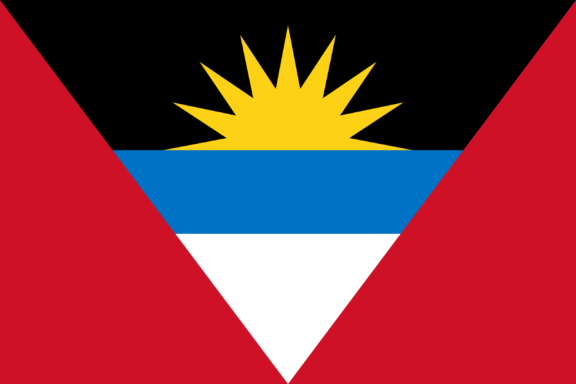
The Antigua and Barbuda flag vividly represents the nation’s character, landscape, and values. Introduced in 1967 and designed by Sir Reginald Samuel, its colors and symbols weave a story of the islands’ natural allure and the vibrant energy of its inhabitants.
The design of the Antigua and Barbuda flag intricately balances horizontal bands and a central sun motif. This layout is visually appealing and packed with symbolism, representing the nation’s rich tapestry of history and environment. It is a testament to the island’s uniqueness, encapsulating its past and desire for a better tomorrow.
Antigua and Barbuda Flag: Color Palette
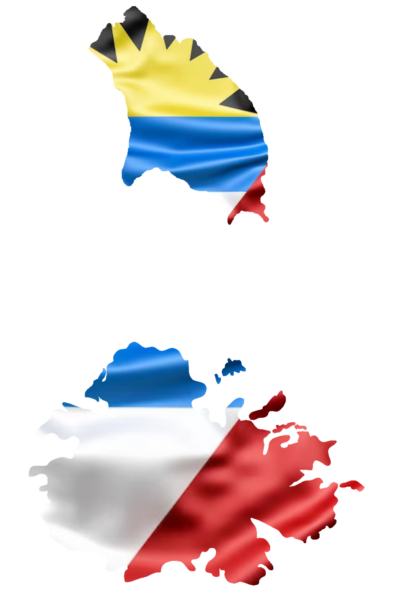
Antigua and Barbuda Flag Emoji: 🇦🇬
The flag of Antigua and Barbuda boasts a unique and striking color palette. These chosen hues enhance its visual appeal and imbue it with profound symbolism. Each color unveils its tale as we delve deeper, resonating with the country’s essence and narrative.
Meaning of Each Color
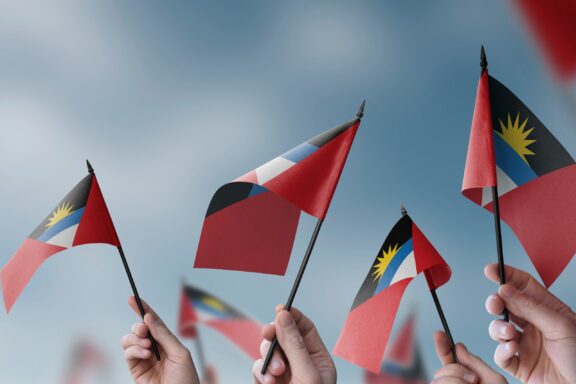
Red
Historically, red has often been associated with power and vitality. In the context of Antigua and Barbuda, this color exemplifies its people’s life force, dynamism, and resilience.
Red can also be a nod to the struggles and challenges Antigua and Barbuda faced in its journey towards freedom and progress.
Black
Black predominantly alludes to the African roots of most of the nation’s inhabitants. It serves as a poignant reminder of the African diaspora and the heritage that is pivotal in shaping the islands’ culture and traditions. Additionally, black can signify strength and determination.
Light Blue
Light blue reflects the vast Caribbean Sea that envelopes the islands of Antigua and Barbuda. With its historical significance as a route for trade, exploration, and sometimes conflict, the sea is deeply intertwined with the islands’ lore. Light blue embodies the country’s connection to its maritime heritage.
White
White’s purity and serenity resonate perfectly with the image of Antigua and Barbuda’s pristine sandy beaches.
Beyond its aesthetic, the beaches have always been integral to the nation, be it for their tourism appeal or their role in the islands’ history as landing points and places of congregation.
Gold
Gold, showcased as a rising sun, carries a dual significance. Historically, sun motifs are often linked to new beginnings and hope. For Antigua and Barbuda, the golden sun symbolizes the dawn of a new post-independence era and its citizens’ unwavering optimism and aspirations.
Antigua and Barbuda Coat of Arms
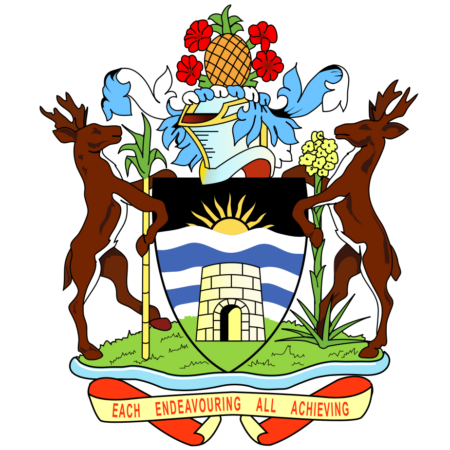
Antigua and Barbuda’s coat of arms visually encapsulates the nation’s prosperous past, natural bounty, and ties to the British Commonwealth. Unlike the flag, which focuses on the geographical beauty and spirit of the people, the coat of arms is a more detailed representation of the nation’s cultural tapestry.
The emblem showcases symbols tied to the islands’ economic and ecological heritage. For instance, agricultural elements, such as the pineapple and sugar cane, hint at past industries that fueled the nation’s growth.
The marine motifs, like the blue waves and the fish, underscore the country’s deep connection with the surrounding Caribbean Sea. The golden fleece is a nod to the country’s historical ties to the British Commonwealth, emphasizing a colonial connection.
While the flag offers a more abstract and symbolic representation of Antigua and Barbuda’s identity, the coat of arms delves into specifics, celebrating various facets of the islands’ legacy and nature.
Historical Evolution and the Meaning Behind Changes
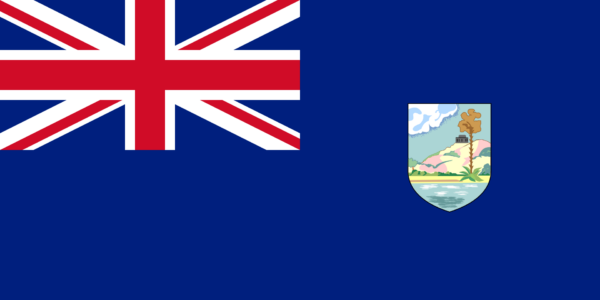
In its current form, the flag of Antigua and Barbuda predates the country’s independence from the United Kingdom in 1981. Adopted on February 27, 1967, its design captures the essence of Antigua and Barbuda in subtle and pronounced ways.
Before its current flag, as a British colony, the island nation predominantly flew the British Union Jack, supplemented by various ensigns tailored to the colony.
The push towards a unique flag was intertwined with the nation’s budding sense of identity and the growing momentum towards self-governance.
Sir Reginald Samuel, an Antiguan artist, was the creative mind behind the present-day flag. Drawing inspiration from the nation’s natural and cultural treasures, Samuel introduced symbols that deeply resonate with the country’s identity, such as the pineapple, red hibiscus flowers, golden sun, and the wavy blue and white bands.
Thus, while Antigua and Barbuda’s journey to independence culminated in 1981, its flag had already fluttered with pride for years, encapsulating the nation’s spirit, aspirations, and unique place in the Caribbean tapestry.
Overall Symbolic Meaning of the Flag
The overall design of the flag features elements that converge to paint a vivid picture of Antigua and Barbuda — a nation proud of its roots, in harmony with its natural surroundings, and brimming with hope for the future. The flag, in its entirety, serves as a testament to the islands’ multifaceted identity and their shared journey towards progress.
Similar Flags to Antigua and Barbuda
Flags can be similar due to shared historical connections, common cultural symbols, or superficial design similarities. When it comes to Antigua and Barbuda’s flag, it’s unique in many aspects.
However, considering the Caribbean context, pan-African influences, and design elements, here’s a list of flags that have some visual or symbolic similarities:
Kenya
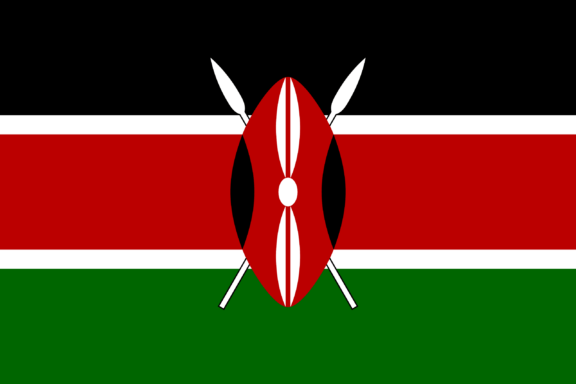
Kenya’s flag 🇰🇪 features horizontal bands in black, red, and green, separated by narrow white stripes. A Maasai shield and crossed spears are centered over the stripes. Like Antigua and Barbuda, the flag of Kenya uses black to represent the people and their African origins.
The red, similar to Antigua and Barbuda’s flag, can be associated with the struggles or passion of the people. Both flags utilize central symbols — the sun in Antigua and Barbuda and the shield in Kenya — to further their national narratives.
Malawi
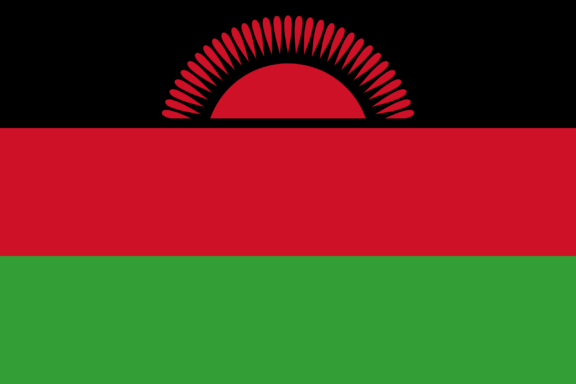
Malawi’s flag 🇲🇼 incorporates horizontal black, red, and green stripes. At its center is a rising sun with 31 rays, reminiscent of the sun on Antigua and Barbuda’s flag.
The black stripe, as in many African flags, points to the African heritage of the nation’s inhabitants. The rising sun symbol in both flags signifies hope, new beginnings, and the dawn of a new era.
Kiribati
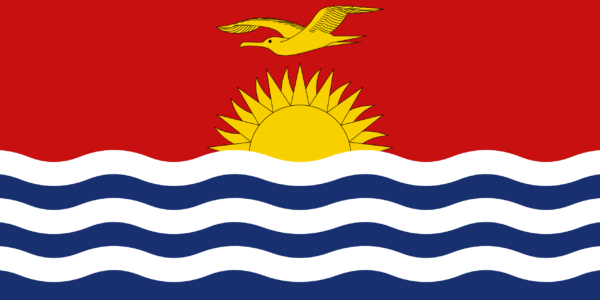
Kiribati’s flag 🇰🇮 is divided, with the top half in red and the bottom half in blue, separated by a yellow frigatebird flying over a yellow rising sun with 17 rays. Much like Antigua and Barbuda’s, this flag draws a significant portion of its symbolism from the sun.
In this context, the sun signifies Kiribati’s position straddling the Equator. The blue represents the surrounding ocean, akin to Antigua and Barbuda’s flag. While the overall design differs, the essence of the sun, sea, and sky resonate in both flags.
Conclusion
The flag of Antigua and Barbuda is a striking emblem, intertwining the nation’s legacy, natural wonders, and hopes. Its intricate design speaks volumes, resonating with citizens and showcasing the islands’ distinct identity in the global arena.
Acting as a testament to their shared past and a guidepost for their journey ahead, the flag encapsulates the individuality and vitality of the nation.
Image Sources and Copyright Information
- Hands Waving Antigua and Barbuda Flags Against Sky: © BUTENKOV ALEKSEI/Shutterstock